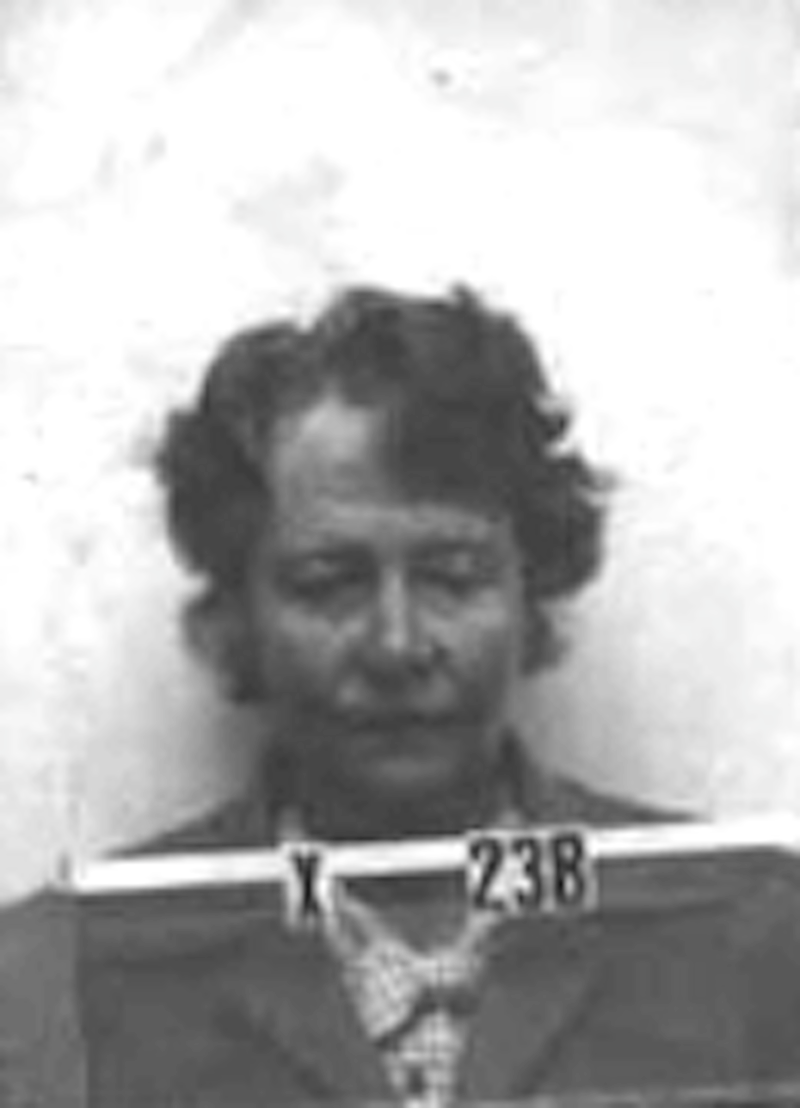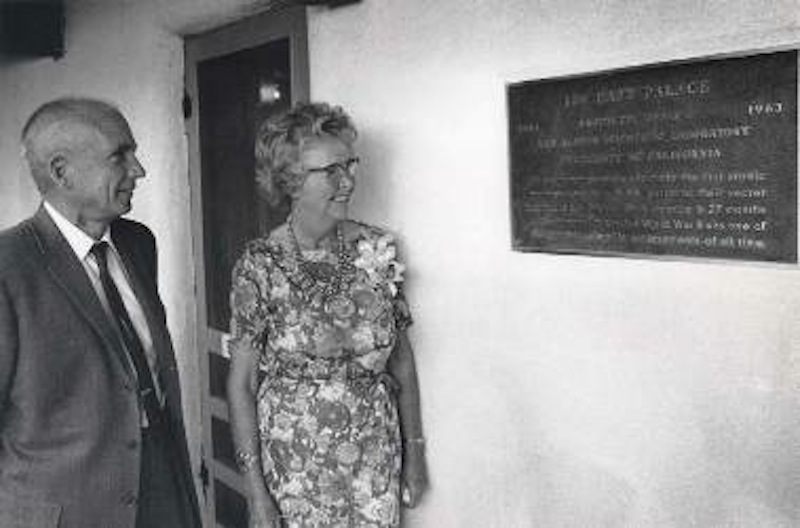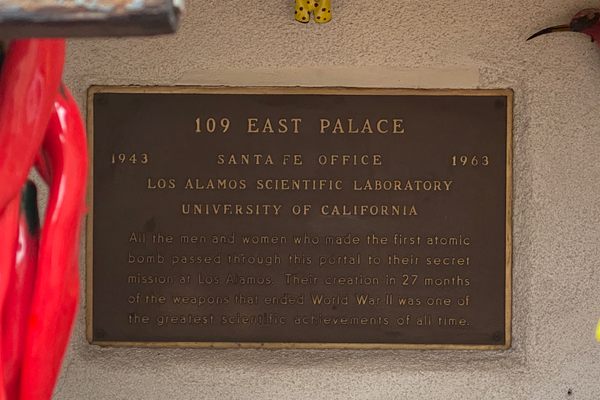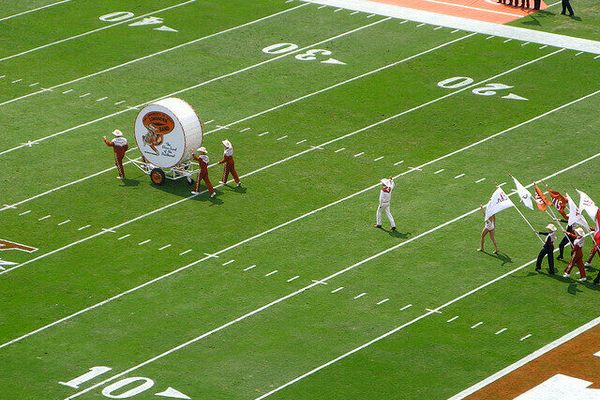Dorothy McKibbin: The Manhattan Project’s Secret Weapon

Dorothy McKibbin hanging out with Robert Oppenheimer. (Photo: Courtesy of the Los Alamos Historical Society)
Oppenheimer. Fermi. Feynman. Groves. When most people think (or read) about who was behind the American effort to make the atomic bomb, these are the names that often come to the fore. But there is one lady who tied all of the scientists, technicians, and other figures together during their time at Los Alamos.
That woman was Dorothy McKibbin, the Atomic Secretary, the woman who kept the Manhattan Project’s secrets. Known as the Gatekeeper of Los Alamos, and later the First Lady of Los Alamos, Dorothy McKibbin worked as the secretary at the 109 East Palace office where those destined for top secret work on “The Hill” would have to check in.
During her 20 years in the position, McKibbin would rub elbows with nearly all those that entered Los Alamos to build one of the most destructive weapons ever created.
McKibbin’s life before she joined the Manhattan Project is almost as fascinating as what she did after. Dorothy Scarritt was born in Kansas City, Missouri in 1897, graduating Smith College in Massachusetts 1919 before travelling the world with her father, visiting Alaska, Europe, South America. Unfortunately, in 1926, McKibbin came down with what she described in a 1965 interview with journalist Stephane Groueff as “a touch of TB” (the interview is available to listen to in its entirety via the Atomic Heritage Foundation’s terrific “Voices of the Manhattan Project”). To get well, McKibbin traveled to the Sun Mountain rehab facility in Santa Fe, New Mexico where it was thought that the dry air, sunny weather, and lovely desert surrounds would help to heal tuberculosis sufferers. While she recovered, McKibbin became enchanted by the hot climate and pueblo culture of the area, taking up drawing and pottery while she was on bed rest. The treatments worked, and within a year she was cured of the disease, but had been infected with something that would come to define her later life: a love for the city of Santa Fe.
Shortly after leaving Sun Mountain, she married investment banker Joseph McKibbin, and the young couple relocated to St. Paul, Minnesota. In 1930 they had a son, Kevin, and the family looked to have a bright future ahead of them. Tragically, Joseph passed away from Hodgkins disease just a year after Kevin was born, leaving he and Dorothy to move on alone. Instead of moving back to her family home in Kansas City, McKibbin and her 11-month-old son moved back to Santa Fe.
Back in the city she loved, McKibbin took a job as a part-time bookkeeper for the Spanish-Indian Trading Company, a small business that represented local Native American artisans, selling their arts and crafts. McKibbin spent the next decade in the city, raising her son as a single mother, while she acquainted herself with the local landscape, becoming an involved member of the community and regular expert on Santa Fe.
As America entered World War II, the tourism economy in Santa Fe dwindled and the Spanish-Indian Trading Company went under in 1943. However at the same time, the U.S. military had chosen nearby Los Alamos for their top secret Manhattan Project, which brought all sorts of new strangers to Santa Fe. One of these strangers was Robert Oppenheimer, who would become the father of the atomic bomb.
 McKibbin, Oppenheimer, and a friend hang out in a field. (Photo: Courtesy of the Atomic Heritage Foundation)
McKibbin, Oppenheimer, and a friend hang out in a field. (Photo: Courtesy of the Atomic Heritage Foundation)
After the trading company closed, McKibbin looked at taking a bank job despite her hatred of arithmetic. She went so far as to take a civil service exam for the position, which she flunked. Undaunted she took the test a second time and passed, tentatively accepting a job as a loan officer. Around this same time, an acquaintance she had met while recovering from tuberculosis, Joe Stevenson, had returned to Santa Fe as the manager of the mysterious “Project Y” that was bringing all sorts of new people to the city. Stevenson asked McKibbin if she would like to take a job as a secretary. When she asked him what the job would entail, and who it was for, he simply said he couldn’t tell her, but he did give her 24 hours to decide if she wanted the position. The next day McKibbin went to lunch at the popular La Fonda hotel with some friends and she saw Stevenson standing with another outsider associated with the project. Still undecided about taking the mystery job, she went to say hi, and that’s when she first met Robert Oppenheimer. McKibbin described the meeting in that aforementioned 1965 interview:
I saw Joe Stevenson. The time was running out when I’d say yes or no. I saw him with Dwayne Muncy, the man in the brown gabardine suit. We were just chatting. I saw a man approach us from the lobby. […] He had on a trench coat and a porkpie hat. He walked sort of on the balls of his feet. I think that he had a pipe in his mouth. He stopped. The two men introduced me. I did not get the name. I wouldn’t have known anything about it if I had. He said about five words to them, and then he turned and went on. I turned to Joe Stevenson and said, ‘I’ll take the job.’ […] I thought that anything with which a man of that magnetism was connected was what I would enjoy.
And with that, the Gatekeeper of Los Alamos was born. McKibbin began working as the receptionist for Stevenson’s wife, before becoming the secretary for Stevenson himself. Her office was located at 109 East Palace, one of the Santa Fe office spaces that Oppenheimer had rented out under the name, “Mr. Bradley.” Stevenson told her not to ask questions and set her loose organizing the droves of people and equipment that would pass through the Santa Fe checkpoint on their way to the secret Los Alamos facility.
Every worker, scientist, supply truck, and shipment had to pass through 109 East Palace to receive badges and get clearance to head to and from the hill, and McKibbin was the warm, smiling face that greeted each of them. As Alexandra Levy, Project Director at the Atomic Heritage Foundation describes it, no principal from the project could travel without checking in with McKibbin—even people like Enrico Fermi, the physicist, had to hand over his Los Alamos badge before moving between Manhattan Project sites. “So she basically controlled a lot of the movement,” Levy says, “She was pretty powerful in the context of the Manhattan Project.”
The administrative office at 109 East Palace became one of the hearts of the Manhattan Project, not just processing the comings and goings of the workers, but handling food and clothing rations for the families and staff. But beyond her expert administrative wrangling, McKibbin acted as a comforting presence to the civilians and military men who would arrive to the office with little-to-no idea why they had been transferred there. At the height of the project in 1943 and 1944, military “taxis” were leaving every hour on the hour to bring them to and from Los Alamos, and McKibbin’s office was fielding over 60 people a day and over hundred phone calls.
McKibbin’s knowledge of the local sites and culture made her indispensable among the workers at Los Alamos who turned to her for insight on where to visit and relax when they weren’t toiling away on their secret bomb. “Hers was the first friendly face that they saw, and many of the people who remember McKibbin talked about how polite she was, how friendly she was, how she helped put them at ease after their long trip,” says Levy. McKibbin even opened up her personal garden to multiple weddings for couples that met on the project.

McKibbin’s security badge photo. (Photo: Federal Government of the United States on Wikipedia)
Of course as the wall between the top secret world of Los Alamos and the civilian world of Santa Fe, McKibbin also acted as defense against spies. While just about every inch of Santa Fe from nightclub to newstand was watched by plain-clothes Army intelligence agents, 109 East Palace was known as being the point office for Project Y, so it of course became a target for espionage. McKibbin recalled in that same 1965 interview, reporting people who would show up asking for passes or information. She even came to know famed Soviet spy Klaus Fuchs, who she recalled was often asked to babysit for families on the base.
Even with all of her work at 109 East Palace, McKibbin also took the time to socialize with the members of the Manhattan Project and even struck up a fond relationship with Oppenheimer himself who came to greatly respect her for her work and attitude. They both had a seemingly overwhelming connection to the rugged lands around Santa Fe and Los Alamos. McKibbin was known to attend parties at his house in Los Alamos where the other scientists and their families would mingle.
Yet for all of her access, as a civilian employee without a top secret security clearance, McKibbin was never made aware of what they were working on up on the hill. Of course by 1945, with the bombing of Hiroshima and Nagasaki, McKibbin had been able to piece together what they had been working on.
McKibbin continued working at the 109 East Palace office long after the research on the bomb was finished, as Los Alamos and the Manhattan Projects slowly came to light. She operated the office until 1963, processing people as they came to Santa Fe and Los Alamos to live and work, helping them find housing and get settled.
When the office finally closed McKibbin retired for good. The Atomic Secretary never moved out of Santa Fe, though, staying in the city and becoming as active and a vibrant member of both the local arts and historic preservation community, as she was while working at 109 East Palace. Her devotion to the city and the Manhattan Project she was given the title of “First Lady of Los Alamos,” as well as being deemed a “Living Treasure of Santa Fe.” She had left as big an impression on Santa Fe as it had made on her life.
 McKibbin revisits 109 East Palace. (Photo: Los Alamos National Laboratory)
McKibbin revisits 109 East Palace. (Photo: Los Alamos National Laboratory)
Correction: In an earlier version of this article, Alexandra Levy was noted as the Program Manager for the Atomic Heritage Foundation, which has been corrected to reflect her job title as Program Director.








Follow us on Twitter to get the latest on the world's hidden wonders.
Like us on Facebook to get the latest on the world's hidden wonders.
Follow us on Twitter Like us on Facebook